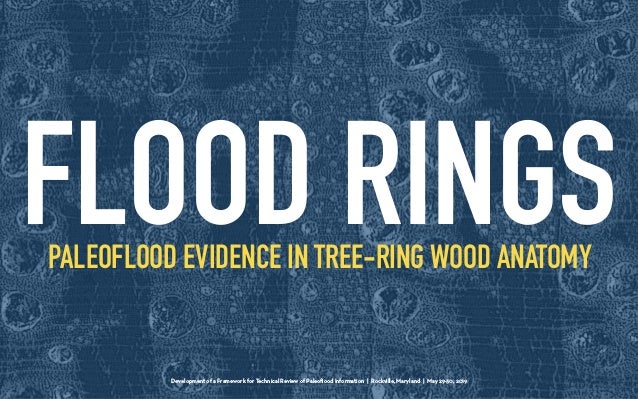A New Study on Brahmaputra Flooding
Context: Researchers have
conducted new studies on the Brahmaputra flood to reveal the most factual
patterns.
Background: A new study looking at seven centuries of
water flow in the Brahmaputra River suggests that scientists are
underestimating the river's potential for catastrophic flooding as climate
warms. The revelation comes from examinations of tree rings, which showed
rainfall patterns going back centuries before instrumental and historical
records.
Researchers working on the flooding pattern of Brahmaputra river, over the years, agree that warming climate will intensify the seasonal monsoon rains that drive the Brahmaputra, but the presumed baseline of previous natural variations in river flow rests mainly on discharge-gauge records dating only to the 1950s.
The
new study, based on the rings of ancient trees in and around the river's
watershed, shows that the post-1950s period was actually one of the driest
since the 1300s. The rings show that there have been much wetter periods in the
past, driven by natural oscillations that took place over decades or centuries.
Findings
& Takeaway
Destructive
floods probably will come more frequently than scientists have thought, even
minus any effects of human-driven climate change. Estimates probably fall short
by nearly 40 percent, say the researchers.
The
tree rings suggest that the long-term baseline conditions are much wetter than
the earlier presumptions. Whether the consideration of climate models or
natural variability, the message is the same. We should be prepared for a
higher frequency of flooding than we are currently predicting.
Brahmaputra
Flood
The
Brahmaputra is one of the world's mightiest rivers, flowing under a variety of
names and braided routes some 2,900 miles through Tibet, northeast India and
Bangladesh. Near its mouth, it combines with India's Ganga River to create the
world's third largest ocean outflow, behind only the Amazon and the Congo. (It
is tied with Venezuela's Orinoco.) At points, it is nearly 12 miles wide. Its delta
alone is home to 130 million Bangladeshis, and many millions more live
upstream.
River,
in every year, floods surrounding areas during the July-September monsoon
season, when moisture-laden winds sweep in from the Indian Ocean and bring rain
along its length, from its Himalayan headwaters on down to the coastal plain.
In
1998, 70 percent of the country went underwater, taking out crops, roads and
buildings, and killing many people. Other serious floods came in 2007 and 2010.
In September 2020 the worst flooding since 1998 was still underway, with a
third of Bangladesh inundated, and 3 million people rendered homeless.
Higher
temperatures drive more evaporation of ocean waters, and in this region that
water ends up as rainfall on land during the monsoon. As a result, most
scientists think that warming climate will intensify the monsoon rains in
coming decades, and in turn increase seasonal flooding.
The
mighty Ganga, flowing mainly through India, is also powered mainly by the
monsoon, so it will likely behave much like the Brahmaputra.
The
Indus, on other side, flows through Tibet, India and Pakistan, derives most of
its flow not from the monsoon, but rather from the winter buildup of snow and
ice in Himalayan glaciers, and subsequent melting in summer.
New
Study: The Tree Rings
It
shows, that, the median discharge was some 41,000 cubic meters per second from
1956 to 1986, and 43,000 from 1987 to 2004 (1998, peak discharge more than
doubled ), while considering records from a river-flow gauge in northern
Bangladesh.
The
rings of the ancient trees, ( Sampled at 28 sites in Tibet, Myanmar, Nepal and
Bhutan, at sites within the Brahmaputra watershed, or close enough to be
affected by the same weather systems ) were analyzed, and found that the tree rings,
which grow wider in years when soil moisture is high, and thus indirectly
reflect rainfall and resulting river runoff.
This
allowed the researchers to assemble a 696-year chronology, running from 1309 to
2004. By comparing the rings with modern instrumental records as well as
historical records going back to the 1780s, they could see that the widest
rings lined up neatly with known major flood years.
This
in turn allowed them to extrapolate yearly river discharge in the centuries
preceding modern records. They found that 1956-1986 was in only the 13th
percentile for river discharge, and 1987-2004 in the 22nd.
After
the detailed study, the researchers found that anyone using the modern
discharge record to estimate future flood hazard would be underestimating the
danger by 24 to 38 percent, based solely on natural variations, human driven
warming would have to be added on top of that.
The
tree rings do show some other relatively dry times, in the 1400s, 1600s and
1800s. But they also show very wet periods of extreme flooding with no analog
in the relatively brief modern instrumental period. The worst lasted from about
1560-1600, 1750-1800 and 1830-1860.
Conclusion
Although,
the flooding has a good side, because the waters drop nutrient-rich sediment to
replenish farmland, and some degree of flooding is essential for rice
cultivation. But some years, the flooding runs out of control, and low-lying
Bangladesh gets hit hardest. Climate change will almost certainly affect the
flow of other major rivers in the region, though not necessarily in the same
ways.
In
the tree-ring study, researchers said that the river's flow has been
anomalously high in recent years.
Human
vulnerability to floods along the Brahmaputra has increased in recent years,
not only due to sheer water volume, but including population and infrastructure
are growing fast. On the other hand, accurate flood warnings have become more
advanced, and this has helped many villages reduce economic and social losses.


Comments
Post a Comment